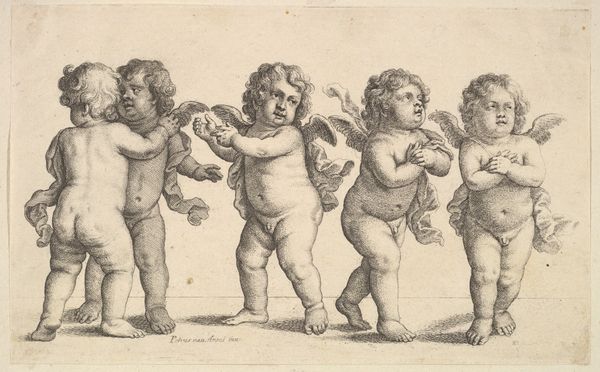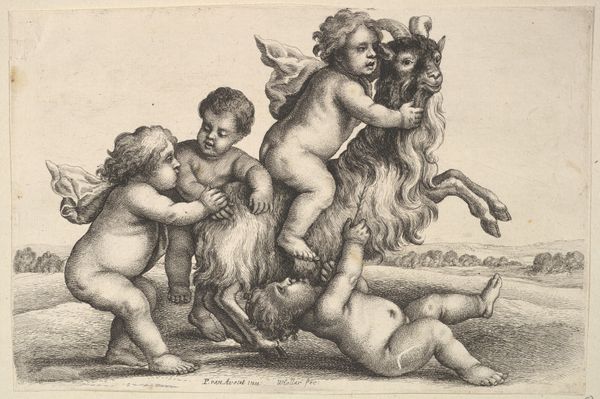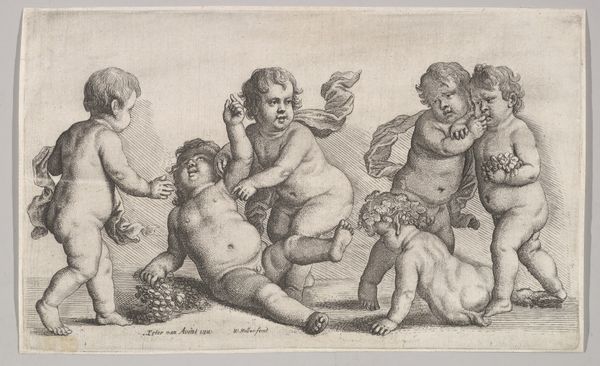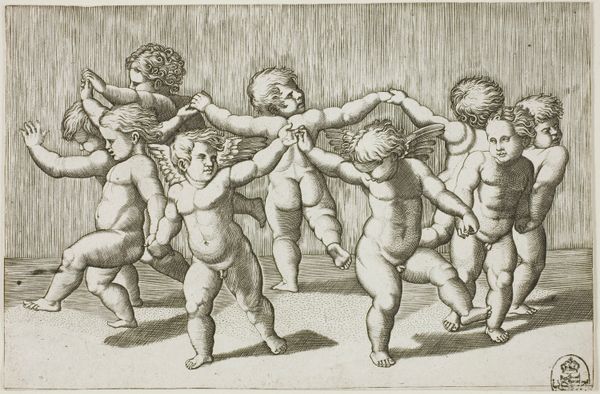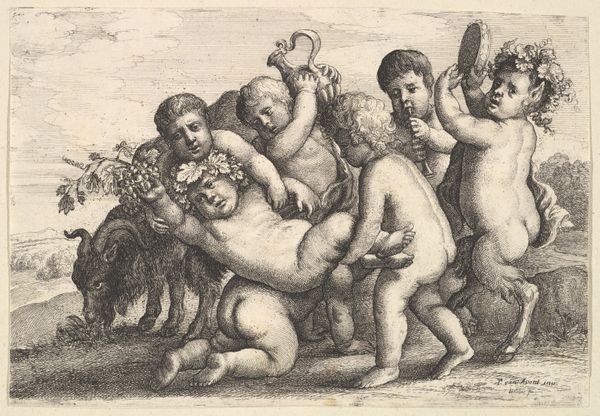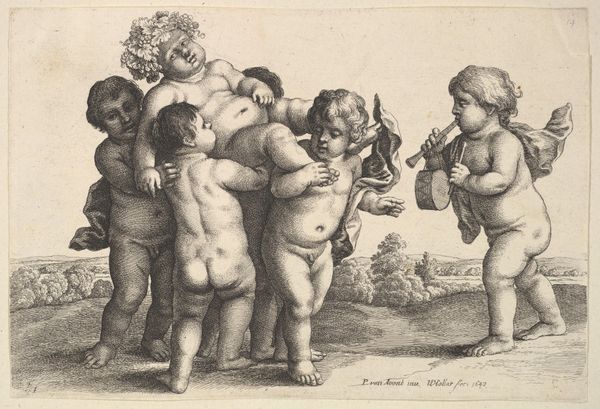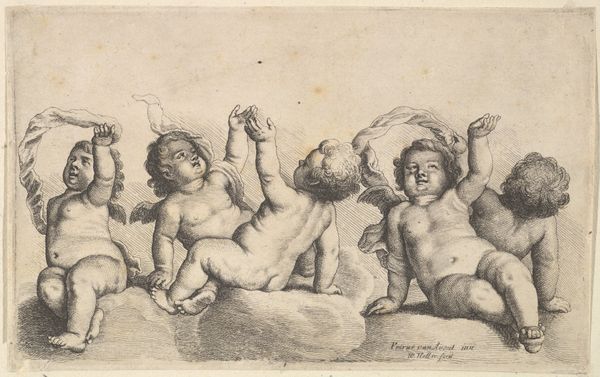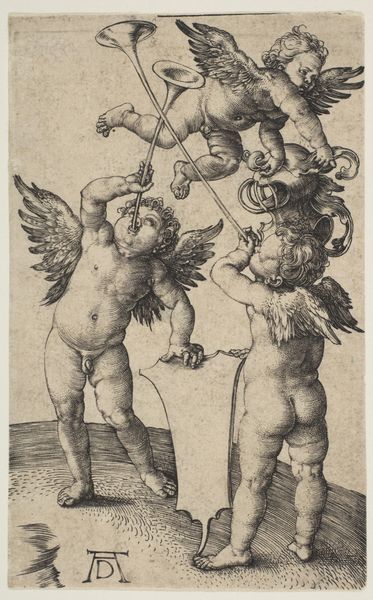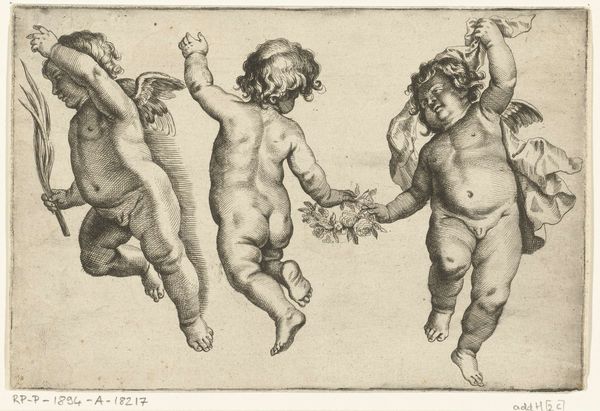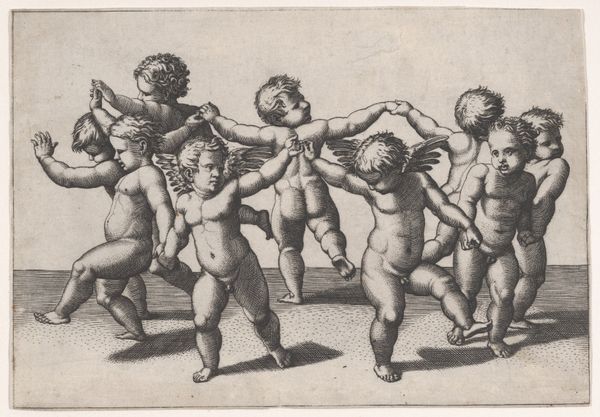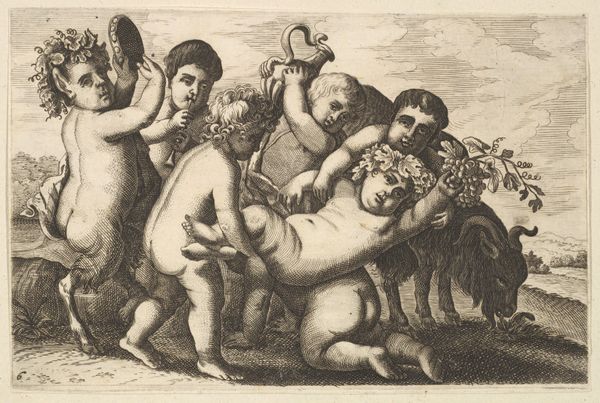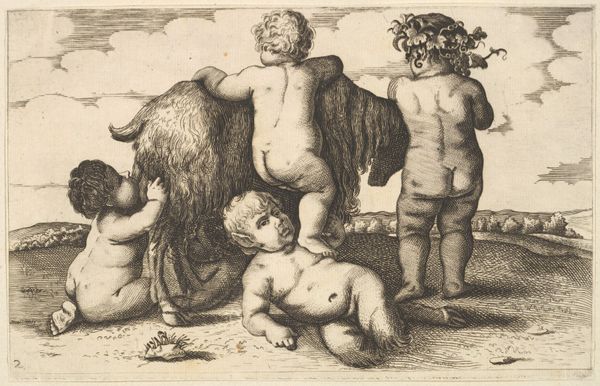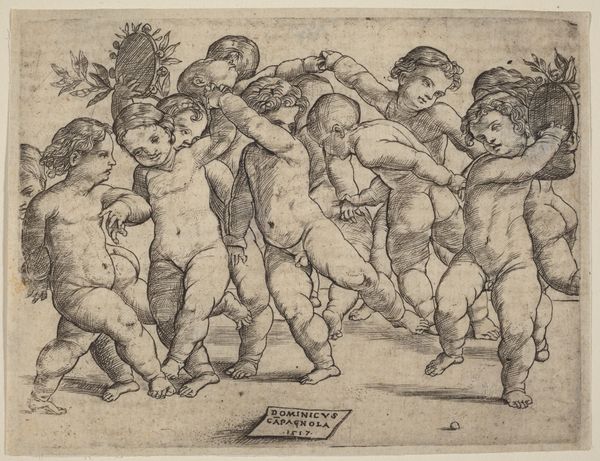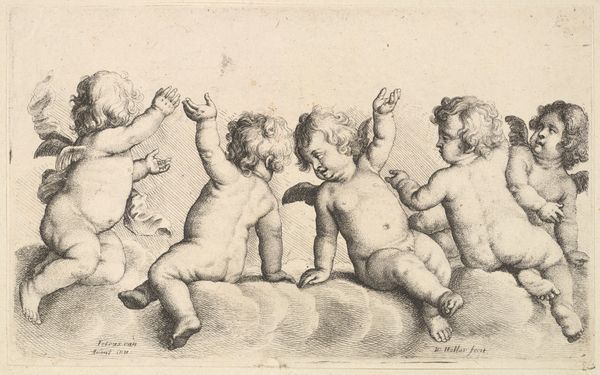
drawing, print, etching, engraving
#
drawing
#
baroque
# print
#
etching
#
boy
#
figuration
#
line
#
genre-painting
#
history-painting
#
engraving
#
miniature
Dimensions: Sheet: 5 3/8 × 8 1/8 in. (13.6 × 20.6 cm)
Copyright: Public Domain
Curator: Wenceslaus Hollar created this intriguing print, titled "Four boys, a young satyr, and a leopard," in 1647. The detailed etching showcases a small revel, seemingly plucked straight from a classical allegory. Editor: Immediately, it strikes me as an unsettling depiction of privilege. These cherubic figures, adorned with grapes, riding a subdued leopard, escorted by a mythological creature—it reads like an insensitive display of dominance. Curator: Well, considering Hollar’s career, this is more likely intended to evoke a classical Roman bacchanal, a visual celebration of wine and festivity, albeit in miniature. The satyr, with his pipes, leads the procession. It echoes the Dionysian theme. Editor: That may be true. But even within that classical framing, these power dynamics are inherent. Who is in control? Why is the leopard so passive? It speaks to the subjugation embedded within even celebratory imagery. Are those even real grapes? It all just seems very performative, rather than celebratory. Curator: Consider, however, the grapes as symbols of abundance and fertility—integral to Dionysian worship. And Hollar’s skill in etching, specifically capturing the texture of the leopard’s fur or the children’s soft flesh, highlights his technical brilliance. We should not overlook the intent to depict a world of myth and pleasure. Editor: Pleasure at whose expense, though? I'm interested in how those power structures manifest in the image itself, and to me it highlights the long historical arc of inequity in supposedly timeless artistic traditions. Curator: Perhaps it's not a glorification, but a depiction—Hollar showing us the symbols of privilege in their raw form, devoid of moral commentary. Is this what he felt was valuable or was asked to do by his patron? He captured a fragment of that baroque sensibility in fine detail. Editor: It's that tension between representation and endorsement that makes it fascinating, right? We grapple with what these images mean in our present, even as we understand their historical context. What these symbols used to evoke might now reflect back to the exploitative systems in play that make the spectacle itself possible. Curator: Indeed. It's precisely through these historical depictions that we begin to recognize the roots of contemporary dialogues. Editor: Agreed. These glimpses offer us insights into power dynamics throughout history and the impact on cultural expression and continuity.
Comments
No comments
Be the first to comment and join the conversation on the ultimate creative platform.
